Dingham's Modified - Now More Realistic!
How to bash them to look almost as realistic as scale couplings in a train.
I have a handful of wagons converted with Dingham's and so far am happy with the result, they operate well once you've got the hang of making them and compared to some other couplings they don't look too wrong in comparison, not to mention the fact that they are compatible with 3-link, Instanter and Screw scale couplings. I'm a little unhappy with the way the iron droppers look however, so what follows is an experiment to try to improve things visually.
So from the usual set up I swapped the iron wire for steel Slaters 3-links instead, bent the brass pivot dropper into a shape that would move the chain further forward and upwards. This looks a little more realistic than it dangling too far rear and under. I had to make sure that the dropper eye didn't foul the buffer-beam and that the curved 'elbow / apex' could move enough forward before it hit the lift restraint tab.
As in the picture, the new shape of the brass dropper looks a little like a 4th link, and in better lighting than the picture - more so. Upon testing it functioned fine. I thought I'd further experiment by shaping the brass dropper into a link, and then fix 2 links to that instead of 3, thus looking like 3 links and not 4. Result was visually perfect, but functionally naff. The brass dropper has to protrude back a small amount to give it the 'see-saw' effect we need for operation.
So before I tried the 2 link version, this is what the 3 linked version looked like.
After the 2 link failure I reverted to the 3 link version, only this time instead of putting the initial link back in the eye (that was abused out of shape!) I decided to actually bend the brass dropper into a slight curve to retain it. This also pushed the chain forward slightly visually improving things.
As described in the picture I didn't have a latched end without links but regardless...
Tadah! Works as well as a standard one! I tried it on the move also, and fine. The instructions said you can't fit links to the looped end. Oh well, this is why I said before I rarely take peoples words as truth without investigating things first, obviously you can. (with a slight redesign)
In my view this has been a fun experiment and one that has worked. In doing so I (we?) can now have a magnetically operated, fully coupled train that finally looks almost as good as scale 3-links, and yet is still compatible with them.
A wagon sitting on a siding with a latch but no links might look a little lacking, but the instructions said the links were optional anyway. I'm repeating myself.
Well, please comment if you like this or have further ideas. ![]()
-
 5
5



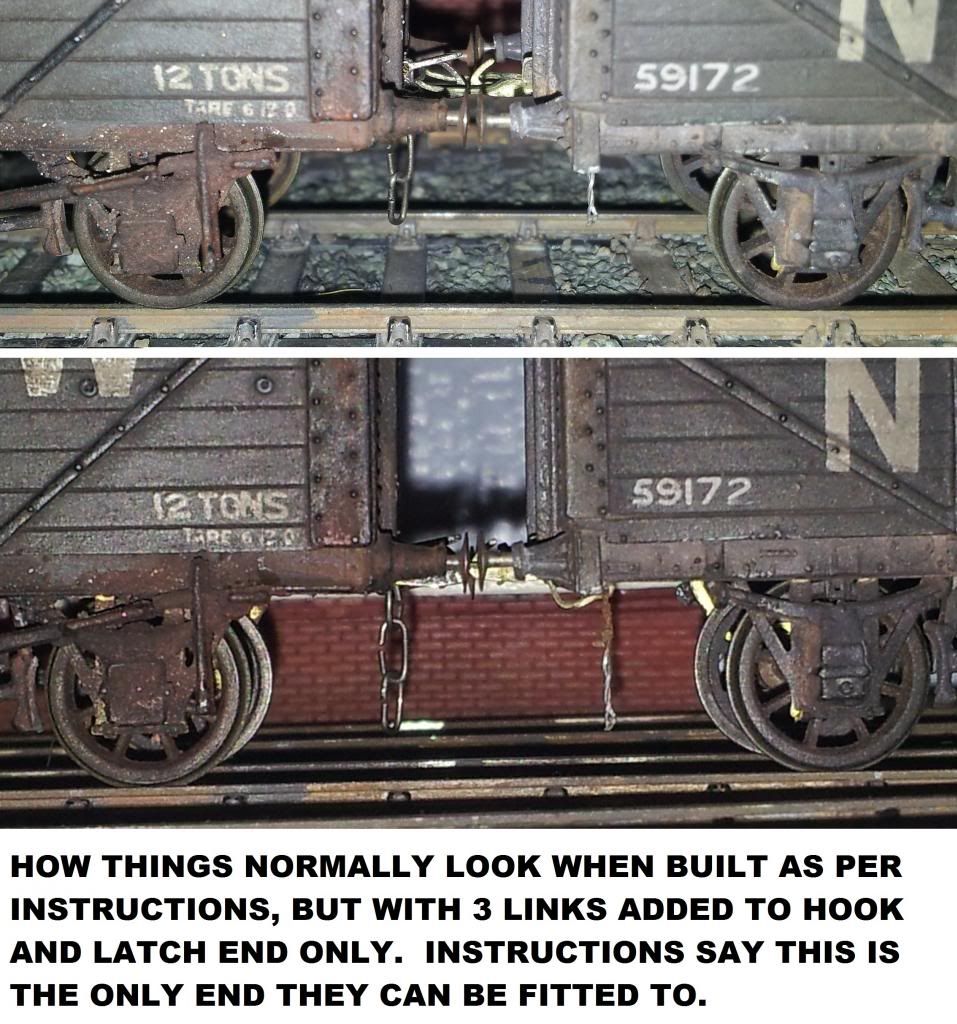
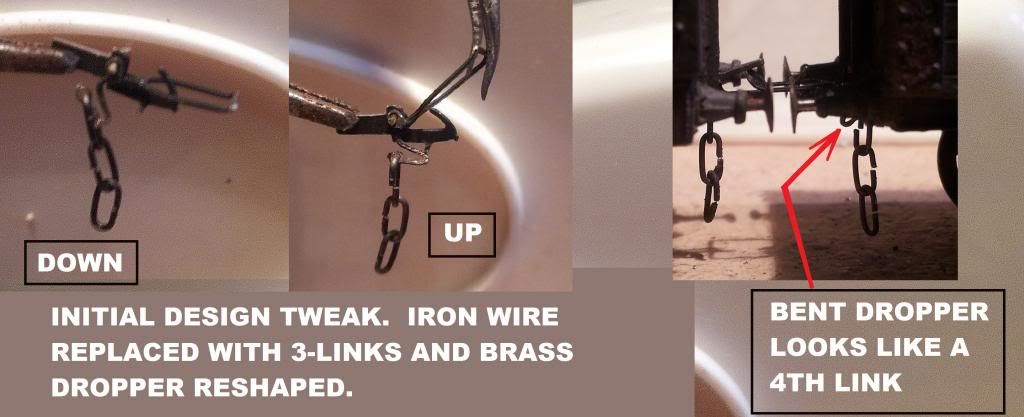
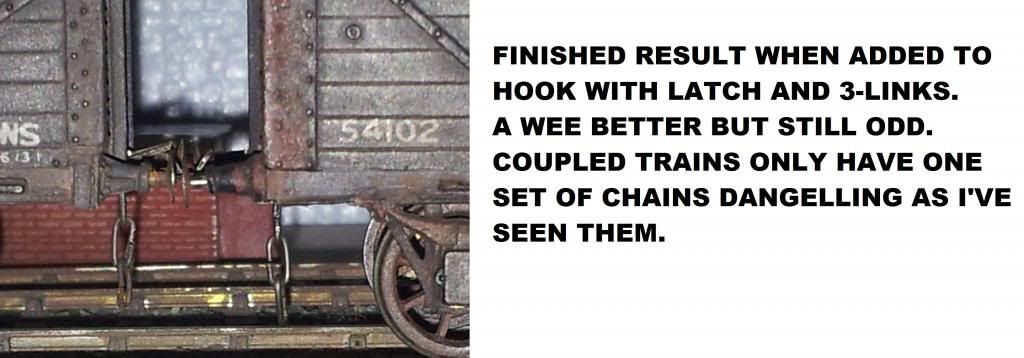
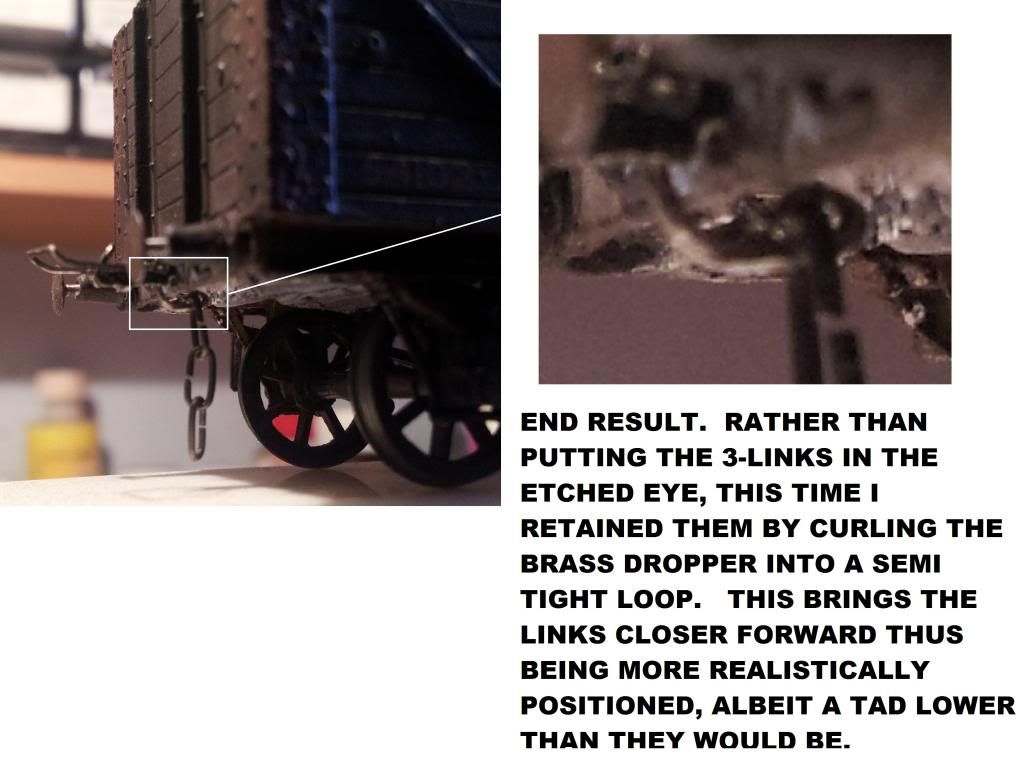
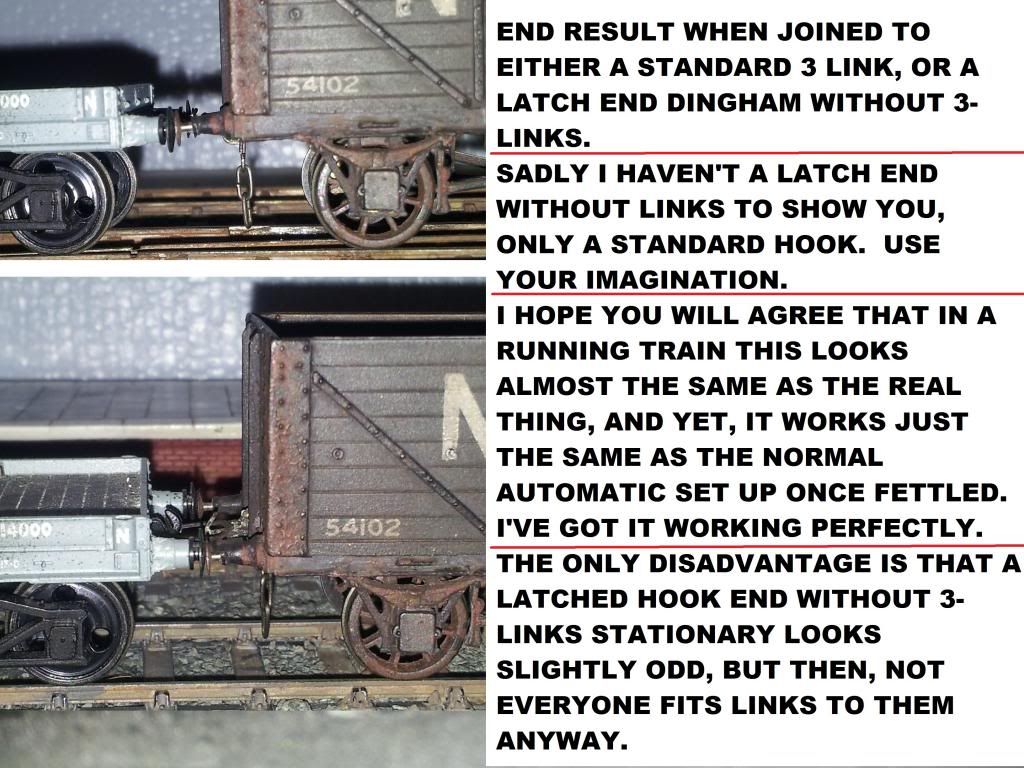

6 Comments
Recommended Comments
Create an account or sign in to comment
You need to be a member in order to leave a comment
Create an account
Sign up for a new account in our community. It's easy!
Register a new accountSign in
Already have an account? Sign in here.
Sign In Now